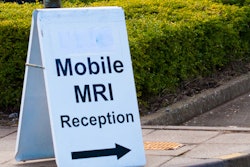
Following yesterday's report about the EMF Directive and its implications for clinical MRI, we now look into the background and discuss how this problem arose.
Adoption of the European Electromagnetic Fields (EMF) Directive would set limits on gradient fields for MRI systems that would prohibit interventional procedures, forbid nurses from remaining with patients during a scanning procedure, and have an unknown impact on the design of new scanners.
"No one would believe something so stupid that could eliminate the use of MRI for clinical procedures would be possible, but that is exactly the risk," said Dr. Gabriel Krestin, PhD, the European Society of Radiology (ESR) vice president, and also lead spokesman for the Alliance for MRI.
The European Union did not originally target exposure to MRI systems in drafting the EMF Directive, and it has since acted to soften the effects of the proposed legislation on medical scanners.
The original target for the directive was the uncontrolled exposure to EMF from welding tools, overhead power lines, and banks of computer terminals in confined spaces.
Yet suggesting EMF limits opened a debate that has now drawn unwanted attention to the huge magnets and radiofrequency coils used in radiology clinics.
Prolonged EMF exposure may have an adverse effect on the central nervous system called peripheral nervous system syndrome (PNS) that creates a short-term pins-and-needles sensation.
The directive lays down two types of value for exposure of workers: "exposure limit values" based on frequencies recognized as having harmful effects, and "action values" based on a limit above which employers must take specified measures.
 |
| The directive's a blunt instrument, according to Dr. Stephen Keevil from King's College London. |
"The directive is a blunt instrument," said Dr Stephen Keevil from King's College London. "It sets exposure limits that either relate to harmless effects, or are well below the threshold at which any effects occur."
"PNS is the biggest issue, and the threshold where this effect begins is well-established," he said.
Manufacturers test gradient limits for new MRI scanners against the International Electrotechnical Commission (IEC) standard, which in turn is harmonized with the EU's Medical Device Directive, which allows the grant of a CE Mark, he said.
"If this proposal passes, we will have a curious situation where it is legal to buy a scanner, but it is illegal to use it," he said.
"We need to take this directive seriously because once it has been adopted we will be obliged to implement its provisions," he said. "You cannot go to a hospital administrator saying what you do is slightly illegal, but you won't get caught."
The EMF Directive sets a threshold for MRI scanner operation that is three times below the established IEC standard, he explained. It takes a precautionary approach by setting limits far below those that may produce known physiological effects, as opposed to an approach based on known effects.
"Our key message is that MRI has been used for 25 years, and there is no evidence any worker has suffered adverse physiological effects as a result of their exposure," said Keevil. "Studies carried out by the United Kingdom and the EC demonstrate this, despite the fact that people have been exposed at levels far above the proposed directive."
"We do agree there is a need for safe working practices, which exist in some countries, and can be harmonized across the European Union," he said. "We support guidelines, but based on the evidence there is not a need to set precautionary limits."



















